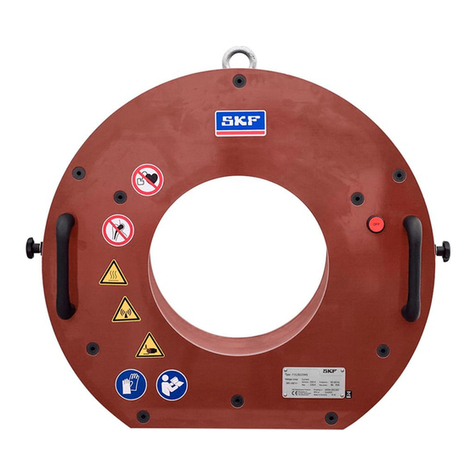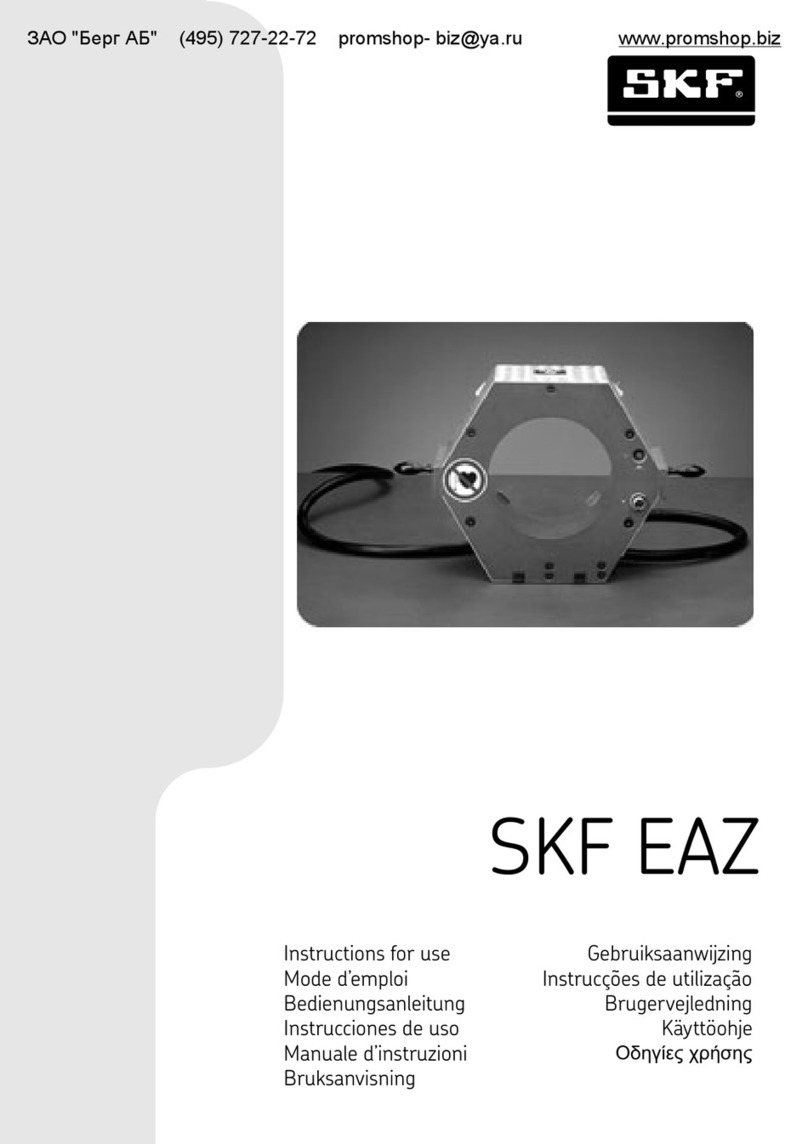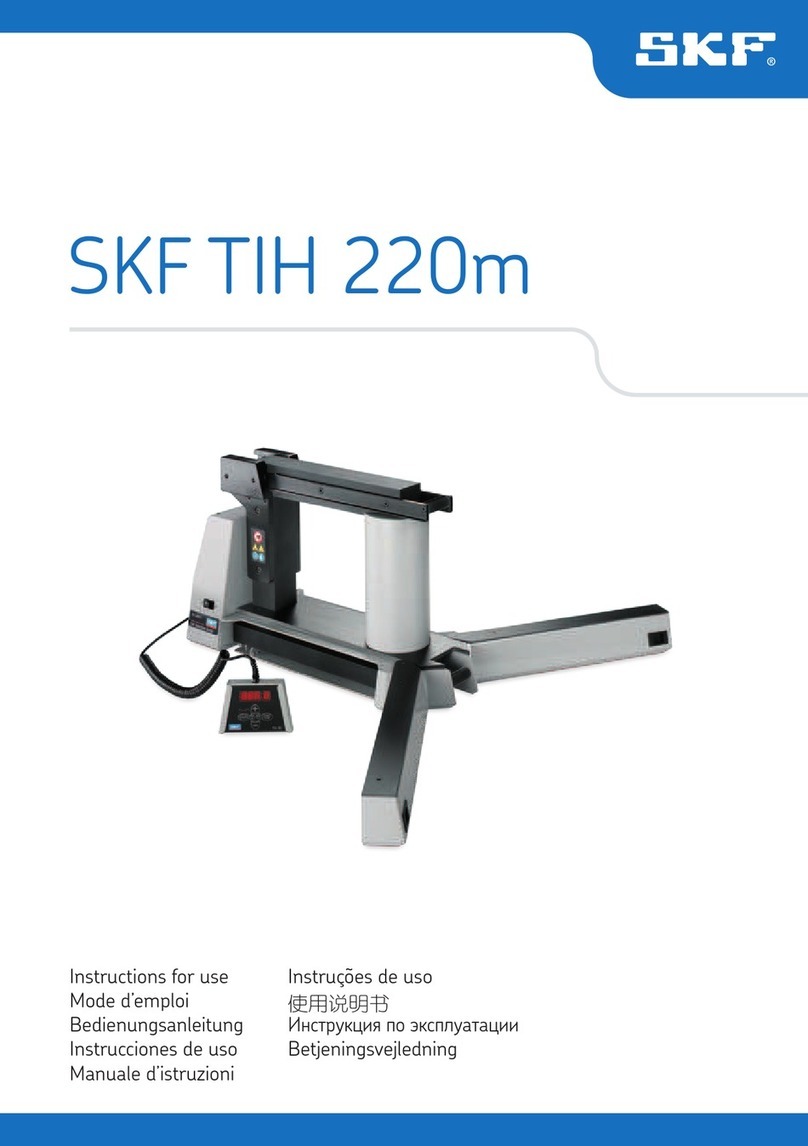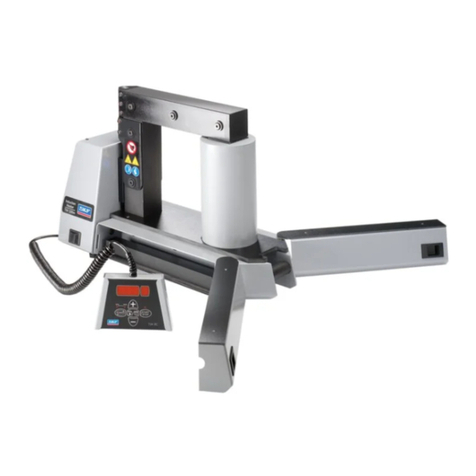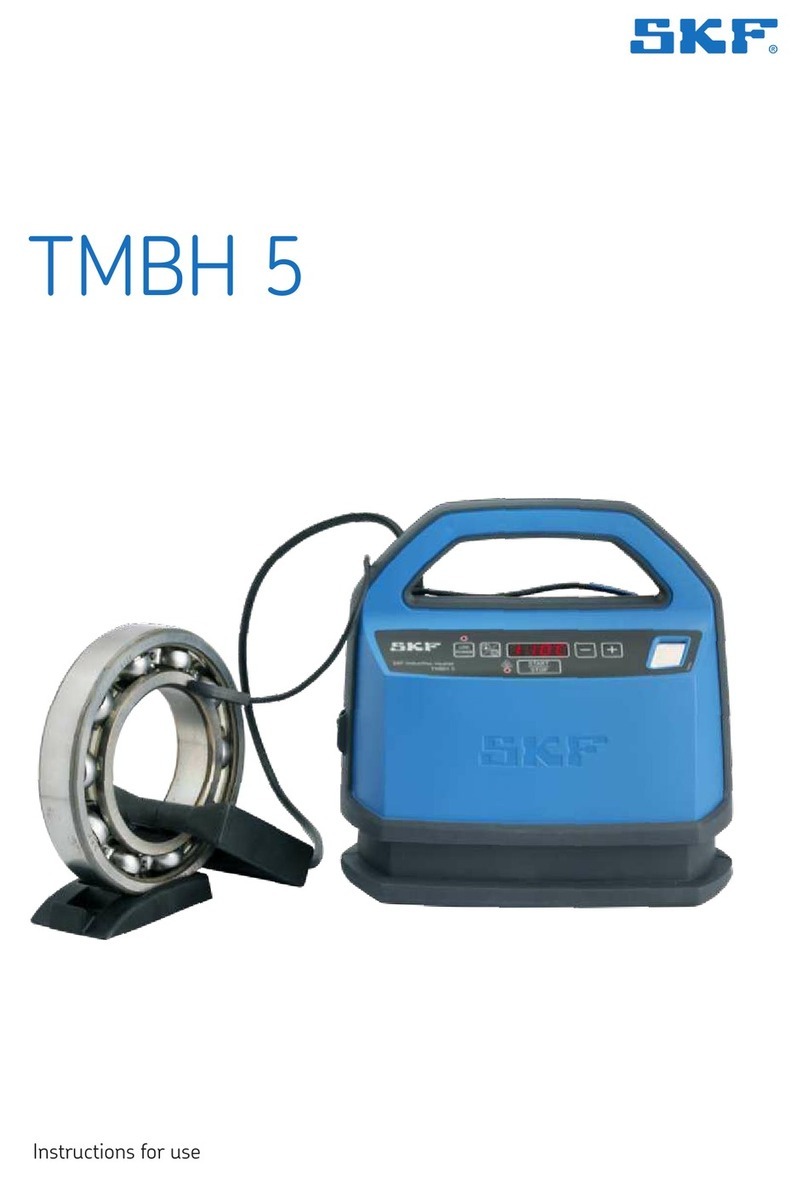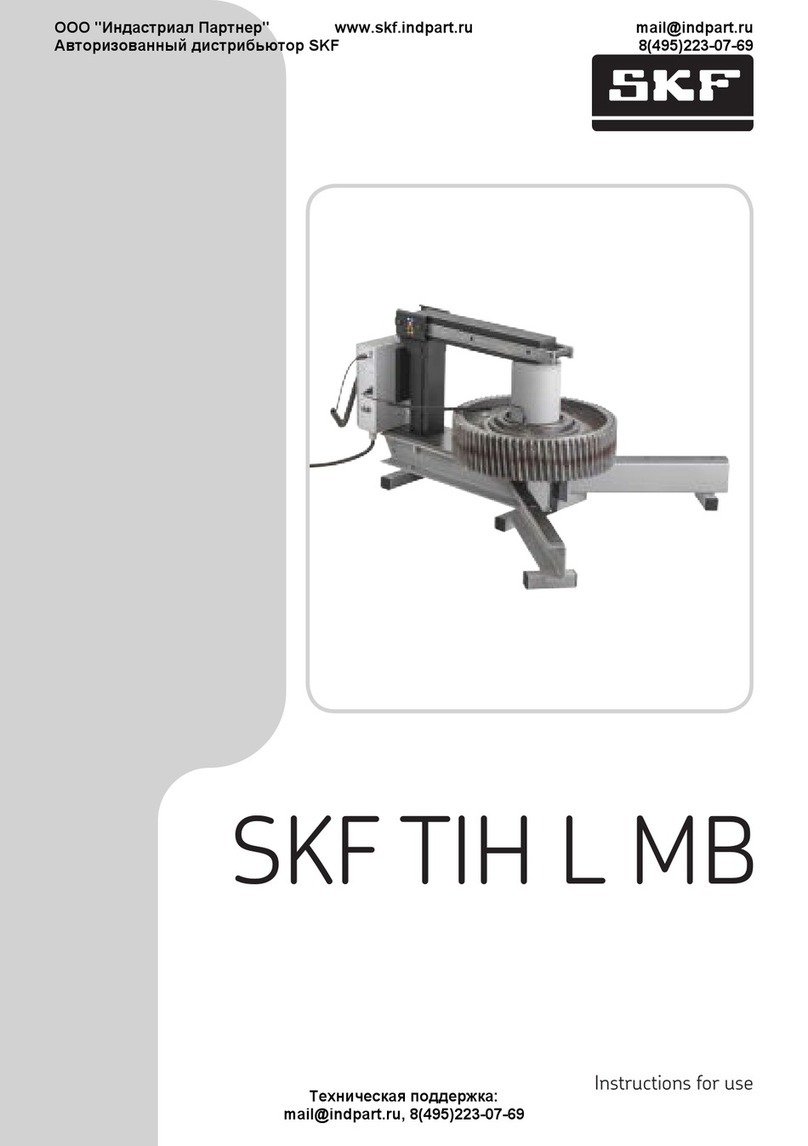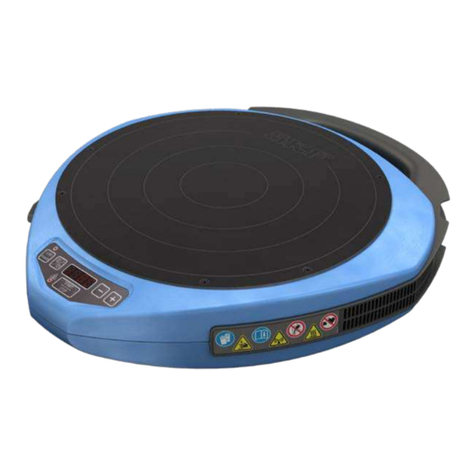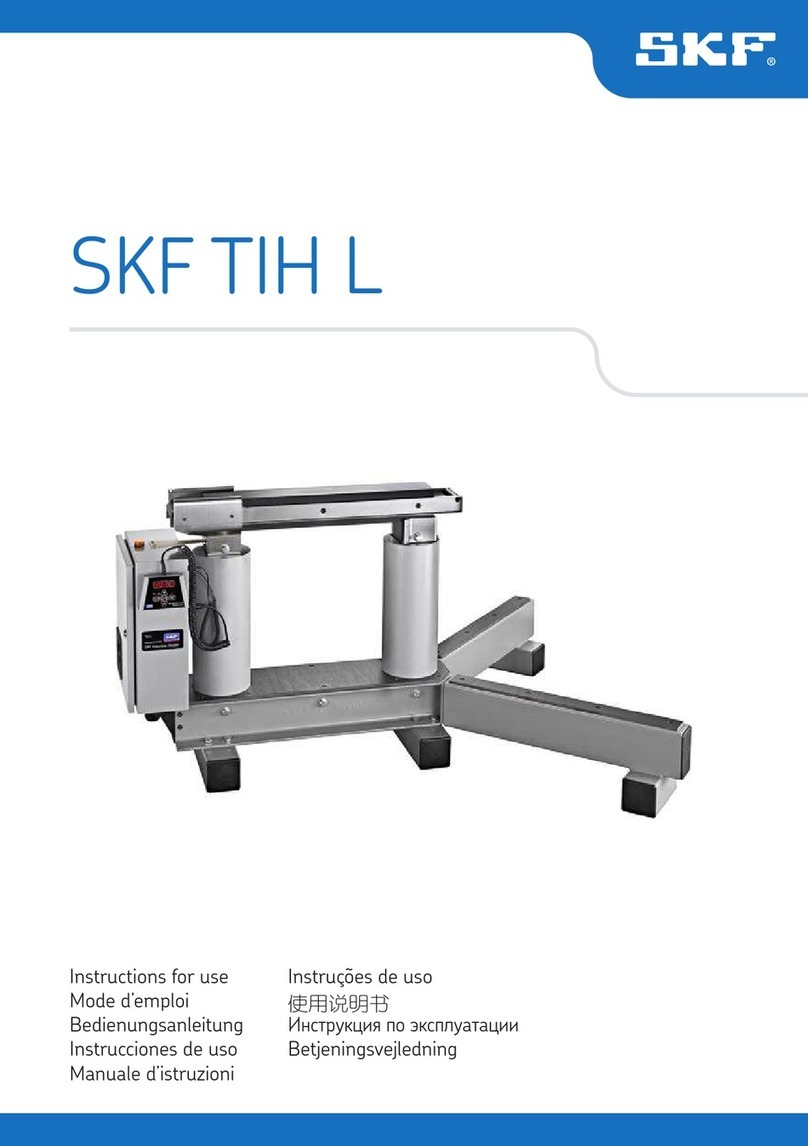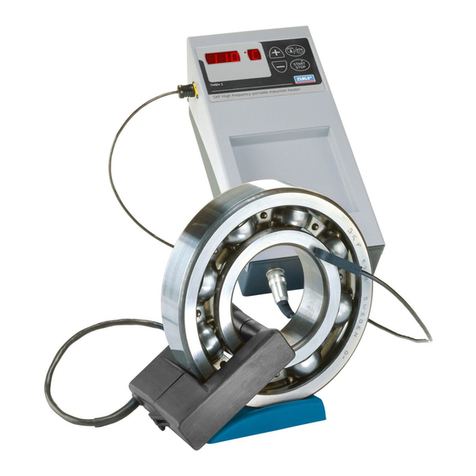
3EN
Safety recommendations
• There is a risk of electric hazard. Only qualified
and adequately trained personnel must be
allowed to operate the equipment.
• Due to the magnetic field, during the heating
process observe a safety distance of 1,5 m
(4.9 ft) with the induction heater. People
wearing cardiac pacemakers or having implants
must observe a safety distance of at least
5 meters (16 ft) from the induction heater
during operation. Electronic equipment, such as
wristwatches, mobile phones; but also magnetic
cards or industrial electrical equipment may
also be affected.
• Use proper handling equipment when lifting
heavy workpieces. Secure the workpiece with
appropriate lifting and handling equipment
while heating.
• Avoid contact with hot surfaces.
Always use heat resistant gloves.
• Never modify the heater. All repair work should
be carried out by an SKF repair shop.
• Make sure the supply voltage is correct.
Connecting the induction heater to the wrong
voltage supply will void the warranty and
probably damage the heater.
• Always make sure the heater is securely
connected to earth.
• Do not expose electronic components to high
humidity or water.
• Never introduce body parts into the bore of the
heater during operation.
• Do not use the equipment in case of damage
or heavy wear is detected on the heating coil.
Also, cracked rings must not be heated with the
electrical induction heater.
• The heater should not be used in areas where
there is a risk for explosion.
• Follow the operating instructions at all times.
• The EAZ and EAZ CC are solely intended to heat
up bearing rings, mill rolls and labyrinth rings. It
is not intended to heat up any other component.
• The heater needs to be operated by
professionally trained people.
Do not leave the heater unattended.
Especially when using time mode.
• In case of fire, do not use water nor powder-
based extinguisher. This will damage the
electronics. A CO2based extinguisher is
recommended, if available.
• Be aware that fumes coming from the heated
element might occur.
EC Declaration of conformity
We, SKF Maintenance Products, Meidoornkade 14,
3992 AE Houten, The Netherlands herewith declare
that the products described in these instructions
for use, are in accordance with the conditions of the
following directive:
EMC DIRECTIVE 2014/30/EU and are in conformity
with the following standards:
EN61000-6-1:2007
EN61000-6-3:2007 / A1:2011 / AC:2012
EN61000-3-2:2014
EN61000-3-2:2013
EN61000-4-2
EN61000-4-3
EN61000-4-4
EN61000-4-5
EN61000-4-6
EN61000-4-8
EN61000-4-11
EUROPEAN LOW VOLTAGE DIRECTIVE 2014/35/EU
EUROPEAN ROHS DIRECTIVE 2011/65/EU
Houten, The Netherlands, February 2019
Sébastien David
Manager Product Development and Quality


















